 username@email.com
username@email.com
In this lesson, we’ll begin to define, identify, and classify polygons.

Let’s begin with triangles, since they are the simplest polygons. That is, they are the polygon with the least number of sides. Then we’ll explore 4-sided polygons, or quadrilaterals, and generalize to polygons with more than 4 sides.
Triangles may be classified by their sides or by their angles. To do so, remember that two figures are congruent if they have the same size and the same shape.
There are three classifications of a triangle according to the number of congruent sides it has: scalene, isosceles, and equilateral.
 |
This is a scalene triangle. None of its sides are congruent. That is, they all have different lengths. |
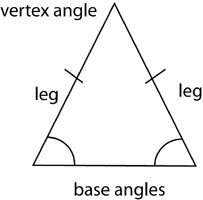 |
This is an isosceles triangle. Two of its sides are congruent. The two congruent sides are called the legs and the third side is called the base. In fact, according to the Isosceles Triangle Theorem, the base angles (those that are opposite the sides that are congruent) are also congruent. The third angle is called the vertex angle. The triangle is marked with congruence symbols to show which parts are congruent. |
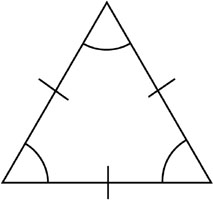 |
This is an equilateral triangle. All of its sides are congruent. It is also equiangular, which means that all of its angles are also congruent. Since the sum of the measures of the angles in a triangle is 180°, and all of the angles in an equilateral triangle are congruent, then each angle measures 180°÷ 3, or 60°. The triangle is marked with congruence symbols to show which parts are congruent. |
There are three classifications of a triangle according to the measures of its angles: acute, right, and obtuse.
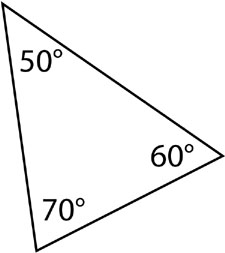 |
Each of the angles in this triangle is acute, so this is called an acute triangle. Notice that the sum of the measures of these angles is 180°. |
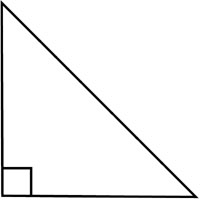 |
Because this triangle contains a right angle, it is called a right triangle. Do you see why a triangle can contain at most one right angle? |
 |
Because this triangle contains an obtuse angle, it is called an obtuse triangle. Do you see why a triangle can contain at most one obtuse angle? |
Which of the following describes this triangle?
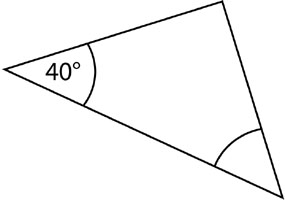
The correct choice is B. This is an isosceles, obtuse triangle. The base angles are congruent, so we know that the sides opposite those angles are also congruent, which makes this an isosceles triangle. The base angles each measure 40°, for a total of 80°. The sum of the angles in a triangle is 180°, therefore, the vertex angle must measure 180° – 80°, or 100°. Thus, the triangle is obtuse. You cannot assume that the vertex angle is a right angle, although it does look like one. Objects are often not drawn to scale.
Quadrilateral literally means “four sides.” A quadrilateral is a four-sided polygon. This is the Quadrilateral Family Tree.
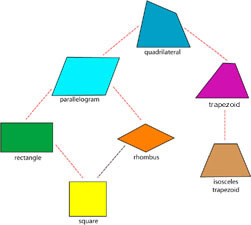
 |
A quadrilateral is any four-sided polygon. |
 |
parallelogram
|
 |
rectangle
|
 |
rhombus
|
 |
square
|
 |
trapezoid
|
How can you use what you know about the sum of the measures of the angles in a triangle in order to find the sum of the measures of the angles in a quadrilateral?
See if these pictures help you answer the question.
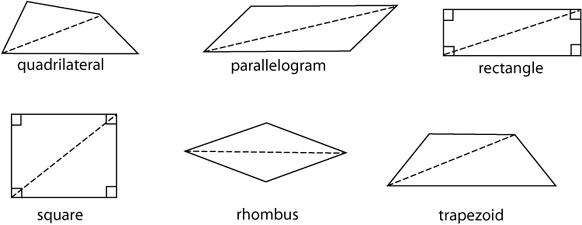
The sum of the measures of the angles in a quadrilateral is 360°.